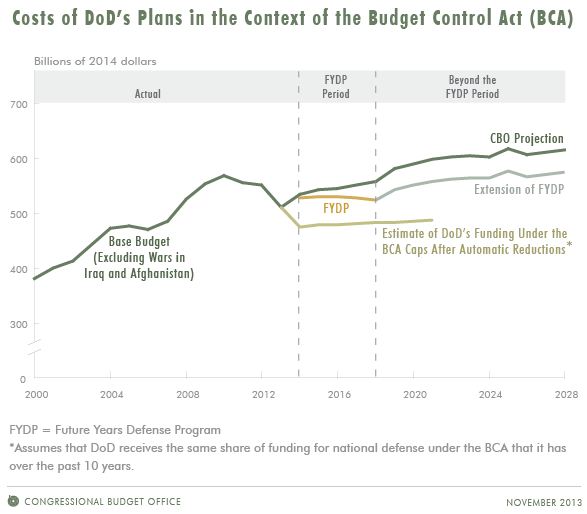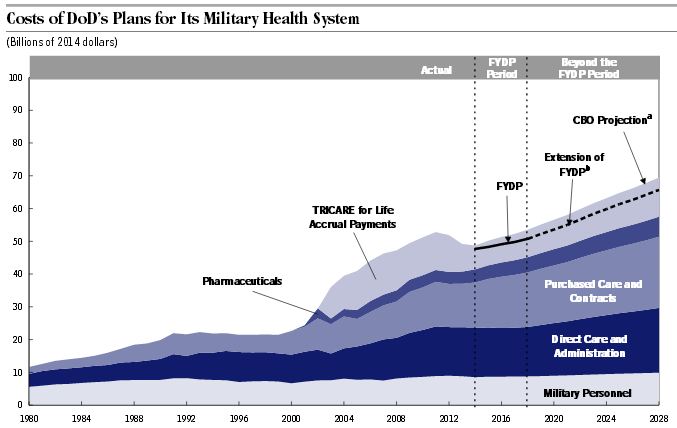CBO Finds Defense Plan's Cost Will Likely Exceed Defense Budget
Every year, CBO analyzes the Department of Defense's Future Years Defense Program (FYDP), most recently done last March. As has been the case over the past few years, CBO's analysis showed that DoD's plans would exceed the caps called for by the Budget Control Act, and far exceed those under sequestration. While the Administration and many in Congress have been looking to replace sequestration, they have not been able to do so yet. Lawmakers should replace sequestration with permanent, long-term savings, but it is becoming increasingly likely that the sequestration caps might be here to stay. Even if the sequester were eliminated, DoD's plans may be unrealistic.
But while the challenge over the next five years is significant, a new report from CBO shows that this gap will grow further over the long term. Under both CBO's and DoD's projections, defense spending will exceed sequester caps by between $60 billion to $90 billion per year, for the entire time sequestration would be in effect. After the 5-year projection of the FYDP, CBO believes that under either projection, defense spending will begin to rise much more quickly than the caps.

The report details projections for operations and support costs, acquisition costs, and military construction and family housing costs. But one of the most dramatic projections by CBO is for the military health system. CBO estimates that DoD will spend around $49 billion in 2014 on military health care, $54 billion in 2018, and $70 billion in 2028. While these projections are lower than last year's, the growth of health care spending is definitely an issue for the military that needs to be addressed.

We warned before that lawmakers might attempt to use a "sequester delay" gimmick, partially delaying part of the sequester by lowering future sequester caps even further. Besides the compounding effect we mentioned, CBO's report shows that the Defense Department may have an equally difficult time meeting the discretionary caps under sequestration in later years, as they will for next year. Reasonable defense savings can be implemented, but there are clearly already tough choices to be made on defense without reducing future spending even farther.
Over the long run, DoD will have to carefully plan and be realistic about the funding it is likely to receive. Lawmakers may be focused on discretionary levels for FY 2014, but to be at all effective, they will have to think next year. Perhaps they should read our papers on the long-term problem and different ways to evaluate policies over the long term as a start.